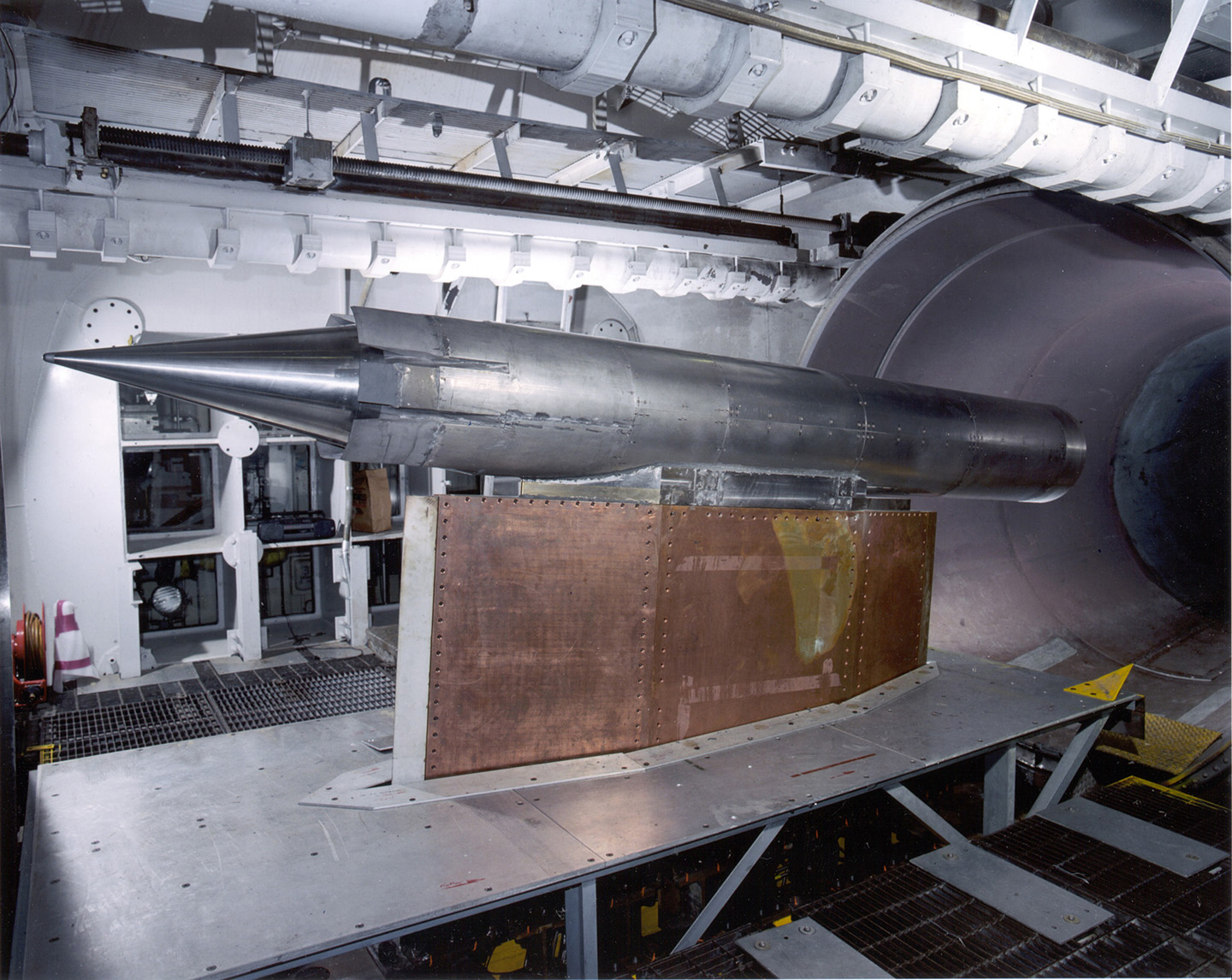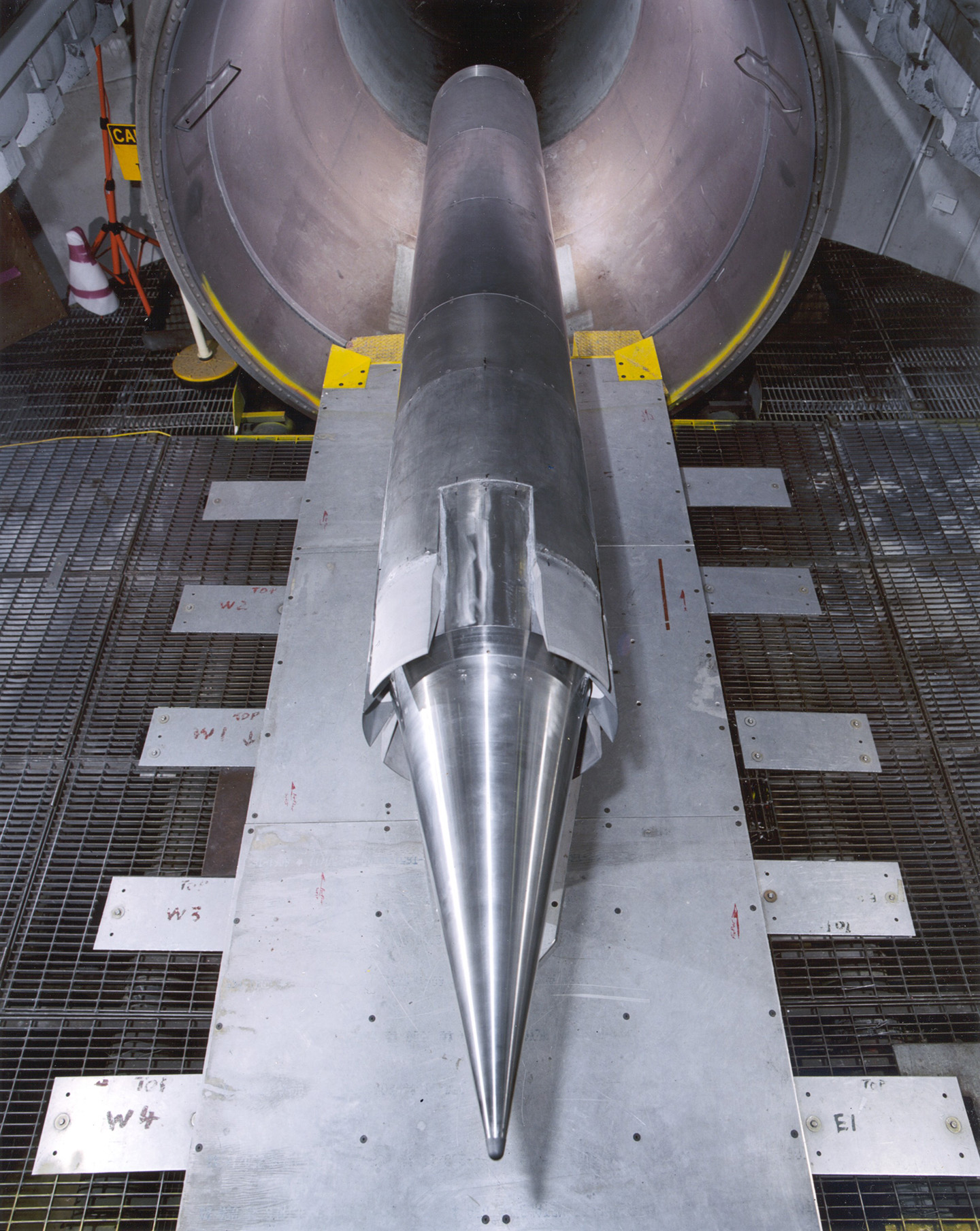Press Release
APL Technology Cornerstone of First Fully Integrated Hypersonic Cruise Missile Engine Test
Mon, 06/17/2002 - 15:25
A team led by The Johns Hopkins University Applied Physics Laboratory (APL), in Laurel, Md., successfully conducted the first-ever ground test of a full-scale, fully integrated hypersonic cruise missile engine using conventional liquid hydrocarbon fuel, May 30, at NASA Langley Research Center in Virginia. The APL-invented Dual Combustion Ramjet (DCR) engine concept being tested forms the basis for a hypersonic strike missile concept being developed under the newly initiated Hypersonic Flight (HyFly) Demonstration Program — a joint effort between DARPA (Defense Advanced Research Projects Agency) and ONR (Office of Naval Research). HyFly is aimed at flying a high-speed, long-range hypersonic air-breathing test vehicle. Such technology could be used to develop a future high-speed strike weapon to engage and defeat time-critical, heavily defended, hardened or buried targets while keeping forces farther from harm.
The May 30th test, simulating realistic cruise conditions for a hypersonic vehicle operating at 90,000 feet at a speed of Mach 6.5, demonstrated robust engine operation. It’s the first in a series of tests to fully characterize the engine’s performance at speeds of Mach 6.0 and above. Tests later this summer, at the Arnold Engineering Development Center (AEDC) in Tenn., will verify operation at Mach 3.5-4.0 flight conditions simulating takeover after a rocket boost.
“This is the first time a full-scale, scramjet missile engine has been tested with conventional, liquid hydrocarbon fuel where the complete engine flowpath is fully installed in a missile configuration. This has enabled us to measure for the first time net positive thrust for an installed hydrocarbon fueled scramjet engine. This is a major milestone for the hypersonic community and it’s the product of a real team effort between DARPA, ONR, APL, Boeing, Aerojet and NASA,” says Mike White, APL program area manager for Advanced Vehicle Technologies. “APL conducted combustor developmental testing and worked with Boeing to refine the DCR inlet design. Aerojet built the freejet engine we’re now testing. Our current freejet tests are the transition element between ground-test development performed under the ONR Hypersonic Weapon Technology Program and the joint HyFly flight demonstration program.” Boeing and Aerojet have now taken over responsibility for the DCR flight demonstrator under HyFly.
“The dual combustion ramjet engine concept is the enabling technology for a future high-speed strike weapon,” according to a joint statement, included within a DARPA press release announcing the test, issued by Rear Adm. Jay Cohen, chief of Naval Research and Dr. Tony Tether, director of DARPA. “A hypersonic strike weapon has the potential to transform our nation’s armed forces to meet future warfighting needs. HyFly is a leading element of DoD’s National Aerospace Initiative to demonstrate advanced hypersonic technologies.”

